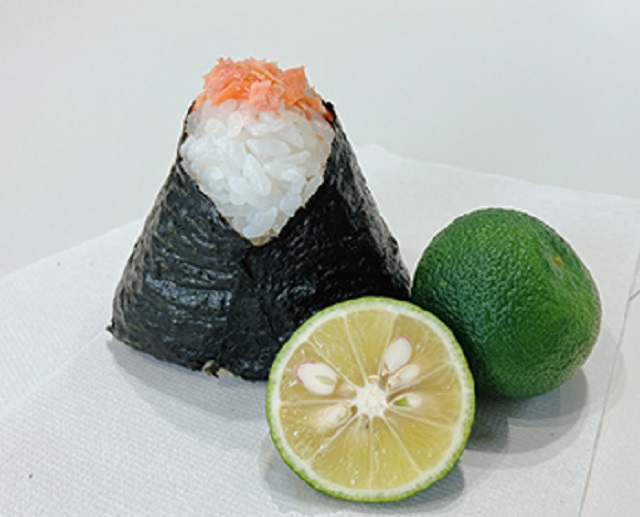Onigiri survey offers us much more causes to journey to each a part of Japan.
You will discover onigiri (rice balls) throughout Japan, however you may’t essentially discover the identical sorts of onigiri. Certain, there requirements like salmon or bonito which might be obtainable nationwide, however sure sorts of onigiri are distinctive to particular components of Japan, or no less than deeply engrained within the native meals tradition.
So with that in thoughts, and this yr’s contemporary rice crop coming in, online journey portal Jalan performed an onigiri survey, asking contributors each for regional onigiri that they love a lot they want they had been obtainable in all places in Japan, and likewise to decide on essentially the most distinctive scrumptious regional onigiri they’ve discovered. A complete of 1,048 responses had been collected from individuals aged 20 to 59, dwelling in all prefectures of Japan, so let’s check out the outcomes for onigiri they need to promote in all places in Japan.
3. Taimeshi onigiri (Ehime Prefecture)

Ehime make up the northwest nook of Shikoku, the smallest of Japan’s 4 most important islands. That offers the prefecture entry to the bounties of the Seto Inland Sea, and the waters off Ehime are an particularly good place to catch sea bream. Taimeshi, which interprets actually as “sea bream rice,” is ready by cooking the fish and rice collectively in the identical pot, and when you may then scoop it right into a bowl and eat it with chopsticks, it’s equally suited to forming into rice balls, the place the sweetness of the rice and fish combine collectively for a beautiful mixture.
2. Ebiten onigiri (Aichi Prefecture)

As soon as once more, we’ve received some food-related compound vocabulary right here. Ebi is the Japanese phrase for “shrimp,” and ten, on this case, is brief for “tempura.” With shrimp being the widely known king of tempura morsels, it’s no shock that it makes for some fashionable onigiri, and ebiten onigiri, also referred to as tenmusu (musubi being an alternate phrase for rice balls), are particularly related to the town of Nagoya.
Ebiten onigiri are usually somewhat smaller than different rice balls, which actually helps the flavour and texture of the shrimp stand out, and the proportionally great amount of seaweed additionally lets it play an enormous half within the taste profile. Due to their dimension, it’s customary to eat a couple of ebiten onigiri in a sitting, they usually’re additionally considerably distinctive in that whereas many kinds of onigiri comprise no less than a pinch of salt, ebiten onigiri have none, and as an alternative have a candy sauce as their main seasoning.
1. Tarako butter yakionigiri (Hokkaido Prefecture)

Tarako (cod roe) is a reasonably frequent onigiri filling throughout Japan. In Hokkaido, although, which is Japan’s greatest dairy producer, it’s typically combined with butter. This may look like an odd mishmash of japanese and western culinary traditions, nevertheless it works, as evidenced by how extensively beloved tarako cream pasta is in Japan. For max mouthwatering impact, tarako butter onigiri are grilled (turning into yakionigiri), with the warmth serving to the tarako and butter soften into one another, incomes it the highest spot in Jalan’s rankings of onigiri that needs to be expanded to full availability in all places in Japan.
Subsequent, let’s check out the most original regional onigiri, as chosen by the survey contributors.
3. Pork and egg onigiri (Okinawa Prefecture)

Should you’re from Hawaii, or have ever taken a visit to the Aloha State, this won’t look like such an uncommon onigiri filling in any respect. However whereas the Spam musubi has lengthy been the best-known kind of rice ball within the U.S., most components of Japan don’t put canned pork into theirs. In a parallel to Spam musubi in America, although, plainly a good variety of individuals have fond reminiscences of consuming these unique-to-Japanese individuals ongiri on their holidays in Okinawa, because the pork and egg onigiri additionally got here in fourth within the survey’s rankings of native onigiri that needs to be offered nationwide.
2. Hida tomato onigiri (Gifu Prefecture)

Tomato rice balls, however, are equally uncommon inside Japan and overseas. Foodies mostly consider Hida’s famend beef because the area’s must-eat meals, however Hida tomatoes are mentioned to have an excellent steadiness of candy and tart notes, and chopping them into cubes, then mixing in some tuna and mayonnaise, is alleged to be a juicy delight when used as an onigiri filling.
1. Sudachi onigiri (Tokushima Prefecure)

Lastly, we’re again in Shikoku, this time in Tokushima, which makes up a lot of the east coast of the island. Sudachi is a form of citrus fruit grown virtually completely in Tokushima, with a taste that’s sharper than limes or lemons. It’s so sharp that sudachi isn’t eaten by itself, however that additionally makes it an ideal accent flavoring. For sudachi onigiri, the filling used is often salmon or kombu (kelp), however with sudachi juice squeezed into the rice and/or grated sudachi peel sprinkled onto the rice ball for an invigoratingly refreshing taste.
In order you journey throughout Japan, keep in mind, similar to each area has historic websites and pure magnificence, so too do they typically have their very own particular onigiri that aren’t to be missed.
Supply: PR Occasions
Prime picture: Pakutaso
Insert photos: PR Occasions
● Need to hear about SoraNews24’s newest articles as quickly as they’re printed? Observe us on Fb and Twitter!
[ Read in Japanese ]





